Geothermal heating project
Becoming a carbon neutral farm is the aim, and according to Managing Director Neil Hellings, their geothermal heating station, which was installed in 2001 is a major advantage in achieving this. "Instead of heating the greenhouses with fossil fuels, they are using geothermal heat. This heat creates a constant temperature in the greenhouse and reduces the level of humidity, which in turn prevents disease like downy mildew. The CO2 produced by this project is injected to the flowers to achieve the best growth and to increase the head size, which creates a win-win situation; better crop and an overall lower carbon footprint", explains Hellings.
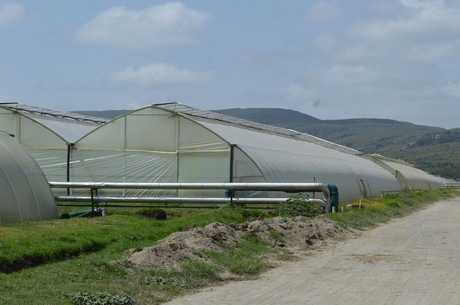
Power generator
In 2004, they installed a power generator that can produce up to 2 megawatts, and in 2007 commissioned a further 1.8 mw which made the farm self sufficient. As they can generate their own power and in order to come a step closer to their goal, Hellings and his team recently decided to invest in electric vehicles. "We recently purchased seven electric vehicles and are currently testing them. If we are satisfied, we are planning to replace all our fossil-fueled vehicles with them."
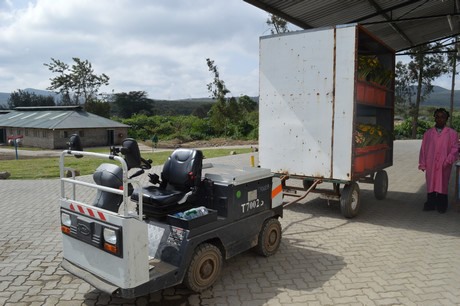
Hydroponic cultivation
Another way in which Oserian is reducing its carbon footprint is by growing their flowers hydroponically. At the moment, about 80 percent of all flowers produced at the farm are being cultivated in hydroponics. "It offers a lot of benefits over soil growing as it enables good control of nutrition, recycling of fertilizers and water. On top of that, for our carnations for example, we can now produce similar volumes on 41 ha instead of 1,000 ha in the soil", says Hellings.
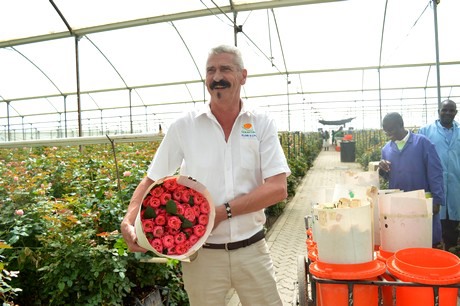
Consolidating the farm
Currently, another large project is being executed at Oserian, which is consolidating the farm. "The locations and farms were spread out over the land, so we had to drive a lot between the locations." Currently, they are in the middle of moving.
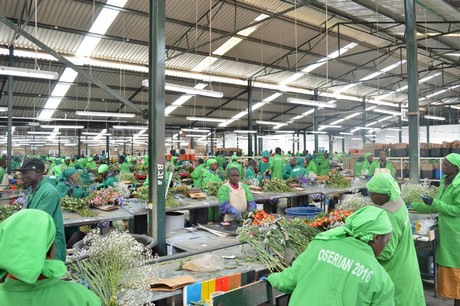
"Our pack house, for example, is now located in the middle of the plot and is surrounded by the greenhouses. All flowers are now being packed at this single location. Also, all departments are merged. Previously, we had one office per department." Oserian has 3,600 employees and, during the high season up to 4,700 employees, working at the company.
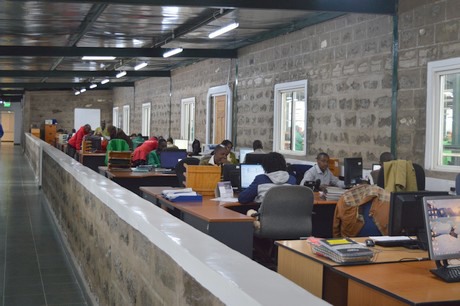
Oserian's new office.
As Oserian is still in the middle of moving, not all facilities are ready, so many temporary offices are being used, enabling them to continue their business.
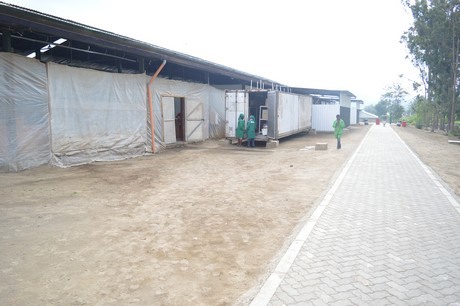
The walls of the pack house are not built yet.
When will the farm be carbon neutral?
The aim is to become a carbon neutral farm, but when? According to Hellings, this will be known soon. "In the coming months, a researcher will investigate what is still needed to reduce the footprint even further and how long it will take for Oserian to become a carbon free farm."
More photos of the farm
During the IFTEX flower show week, where Oserian showcased their products along with many other Kenyan flower growers in Nairobi, we had the chance to visit some growers in the Naivasha region. Oserian was one of the farms that we visited. They opened their doors and showed us the process from cultivation till packaging. Below some photos to give you an impression of this farm and its processes.
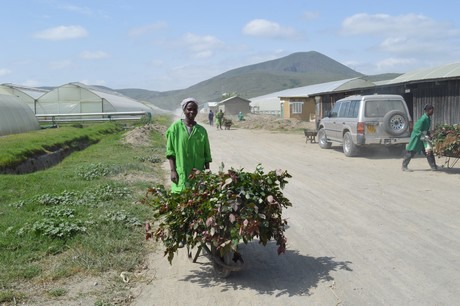
In between the greenhouses at Oserian.
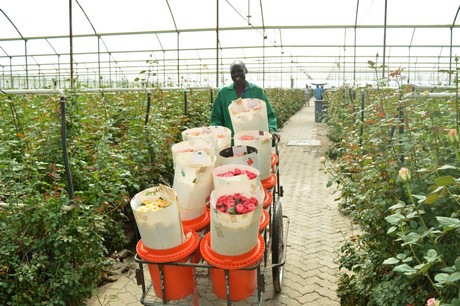
Inside one of their greenhouses where they cultivate roses. Roses have just been harvested and are on their way to the cooling area in the pack house.
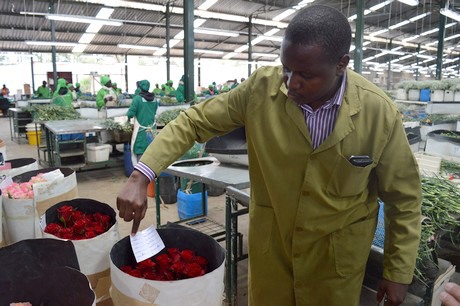
Nixon Ngeno, Head of Quality Assurance, gave us a guided tour in the packaging area of Oserian. On this picture, he is explaining how the flowers are coded before they move into the cold store, before they are packed.
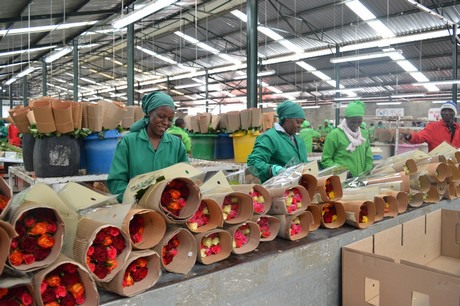
Roses being graded and packed. They supply their flowers to the auction and directly.
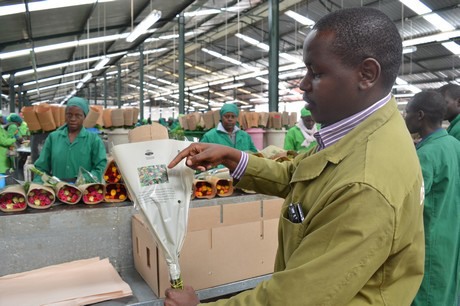
A sleeve of Waitrose Foundation. This foundation is a partnership between Waitrose, its suppliers and the growers who produce, pick and pack their fresh produce in Ghana, Kenya and South Africa. The Foundation was launched in 2005 to help improve the lives of the workers and communities that supply the products, including some citrus fruits, flowers and avocados.
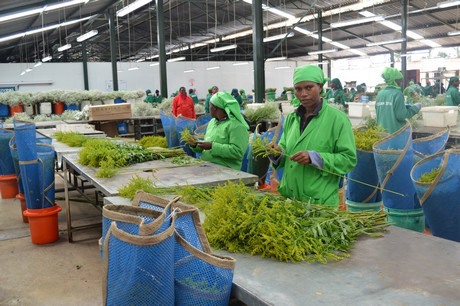
Solidago being graded and packed.
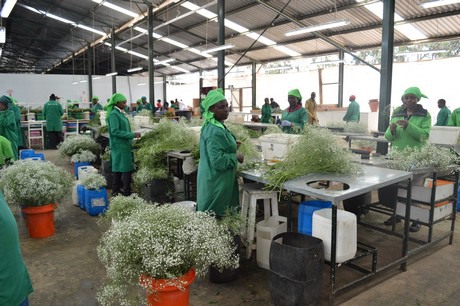
Gypsophilas being graded and packed.
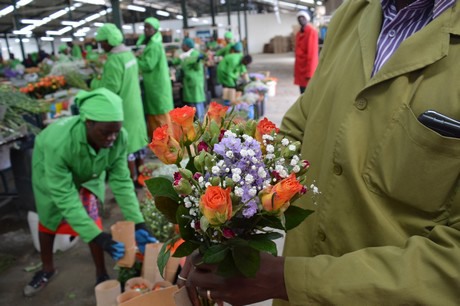
Next to straight bunches, Oserian also supplies bouquets.
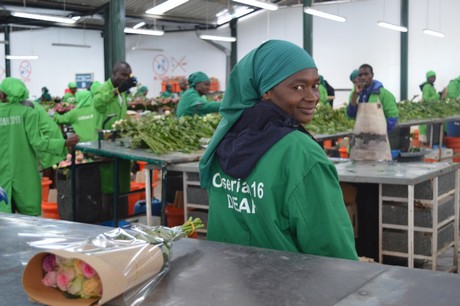
Deaf employees have the word "DEAF" written on the back of their work suit.
For more information
Oserian
www.oserian.com










